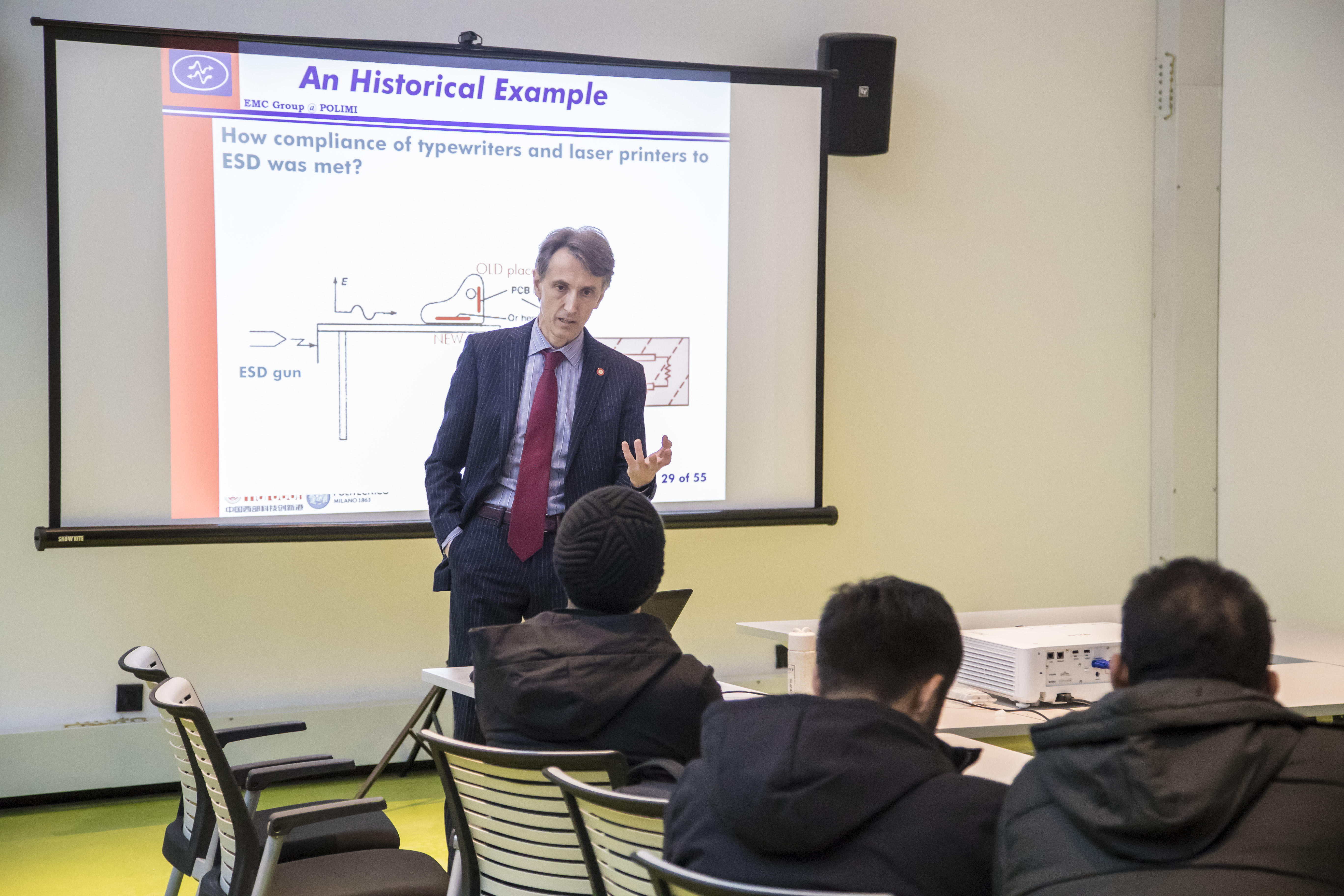By?LONG?Yun?&?BI?Weizi

Professor Sergio Amedeo Pignari?in?class.?(PHOTO:?XJTU)
The opening ceremony of the XJTU-POLIMI Joint School of Design and Innovation in Xi'an on September 7, 2019, marked a significant milestone in the long-standing partnership between Politecnico di Milano (POLIMI), Italy and Xi'an Jiaotong University (XJTU). This joint school was and still is the first overseas campus of POLIMI.
At the forefront of this partnership stands Professor Sergio Amedeo Pignari, the executive associate dean of the XJTU-POLIMI Joint School of Design and Innovation, whose pivotal role has been instrumental in bringing this collaborative vision to reality.
The beginning of collaboration
"This is a long-dated collaboration," Pignari told Science and Technology Daily, emphasizing the depth and breadth of the partnership between these two universities. Since its official inception, in 2012, the collaboration has evolved significantly, notably with the launch of a Double Degree (DD) Program at the Master's level in Electrical Engineering. Over the years, this program has cultivated over 100 graduates who have seamlessly transitioned into high-level positions in the global job market.
However, the strides of collaboration extend far beyond this point. Pignari has been actively involved in the early discussions on the feasibility of the Joint School, including the formal application procedure and proposal submission to the Ministry of Education (MoE) of China, since 2015.
The academic exchanges have expanded further, including virtually all the other branches of Engineering, Architecture, and Design, and encompassing a DD Program at the Master's level in Architecture oriented towards Heritage, approved by the MoE of China. Also, the collaboration has not been confined to Master's programs. Two innovative Learning Programs at the Bachelor's level have been started in the Joint School, further enhancing the educational landscape.
In the current phase, Pignari is dedicated to managing teaching activities and fostering research collaborations among POLIMI, XJTU, and the industrial world. His efforts have gained positive feedback from national and international companies.
According to Pignari, the Joint School transcends the conventional university school model. It represents a collaborative effort between Italy and China, leveraging their complementary strengths to drive “a new paradigm for innovation development.”
Looking ahead, Pignari hopes the Joint School runs a diverse range of innovative Learning Plans covering creative and technological areas, focusing on key technological domains, such as the green and intelligent technologies for carbon neutrality, sustainable cities, and smart manufacturing.
The man behind the expertise
Pignari's academic journey began as an electronic engineer specializing in EMC (electromagnetic compatibility). His expertise lies in researching interference phenomena, which centers around the aerospace, automotive, energy and other related sectors, showing his dedication to addressing real-world challenges.
Pignari highlighted the unique balance inherent in his research field, "I like [my research field] very much because it's a very balanced subject. It is made for 50 percent of theory and 50 percent of practice." For him, this equilibrium is a crucial aspect of his work, where electromagnetic and circuit theory are seamlessly integrated with experimental tests.
His commitment to international sci-tech cooperation is evident in his active involvement with prestigious organizations such as the Chinese Society for Electrical Engineering and the Institute of Electrical and Electronics Engineers. As a Fellow of these organizations, he considered it a great honor and acknowledged the positive impact on his work.
His involvement in these organizations has facilitated personal connections with renowned scientists and research groups globally. Speaking about the importance of international collaboration, Pignari said, "For scientific research, there are no borders. It is very important to be able to interact, discuss, and brainstorm with all the people around the world, because that's the only way to maximize the possibility of providing a concrete contribution to sci-tech advancement."
The nuances and commonalities between two countries
Pignari's connection with China, especially Xi'an, is not merely academic. "I visited China for the first time in 2008, and on that occasion, I stayed in China for a couple of months to deliver a course at Tongji University in Shanghai," Pignari recalled. The experience left a deep impression on him, and he was captivated by the nuances and commonalities between China and Italy. "I immediately realized that travel would have had a big impact on my future professional and private life," he said.
One aspect that stood out during his time in China was the "cultural connection through food." Pignari said, "Italian and Chinese cuisines share this 'cultural aspect' completely. We don't consider food just energy to live, and the implication of [food] is much more for us."
When asked about interesting stories while working with Chinese counterparts, Pignari shifted the focus to Xi'an, highlighting the city's unique blend of history and modernity. He emphasized Xi'an's role as a city that allows visitors to witness "the roots and the wings" of China, where the past merges with the future in a distinctive blend.
This article is also contributed by XJTU.
The trio will conduct a series of experiments in fields such as life science, fluid physics, combustion science and materials science. Notably, this is the first time that fruit flies have been taken on a Chinese space mission as experimental subjects. What made scientists choose fruit flies? What experiment will they undergo?
